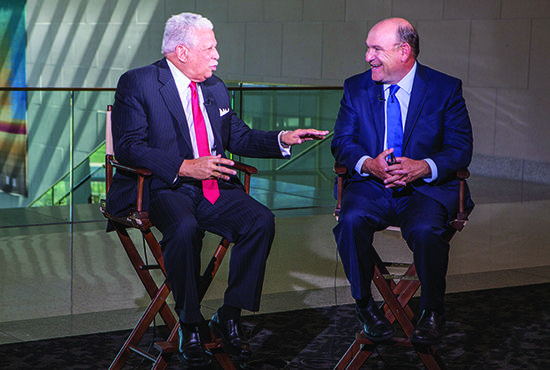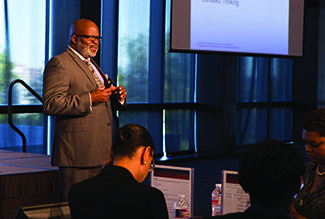Minorities in the banking industry face several hurdles when forging a successful career, including the lack of role models, mentors and access to career development resources.
“It’s incumbent upon leaders to make it clear there is a path and to actively engage with groups of potential employees and be proactive in telling them about our great profession,” Kansas City-area banker Pam Berneking said.
Berneking was a panelist for “Banking and the Economy: A Forum for Minority Bankers,” Sept. 28-29 at the Federal Reserve Bank of Kansas City. The forum focused on empowering minority bankers through a collection of career and leadership strategies and economic insights.
“The foundation for success is courage followed by elevated thinking, the way you actually feel about your circumstances and how you positioned yourself,” Doug Harris, chief executive officer of Kaleidoscope Group in Chicago, said about his golden and “unwritten” rules for career success.
Harris, the forum’s keynote speaker, also identified exposure, image and performance as key elements for long-term success.

But it’s difficult for anyone, especially minorities, to look at long-term success in banking when the industry has been consolidating for the more than a decade.
“While I consider the trend (the declining numbers of banks), it is disconcerting to think that today we only have in the U.S. 162 minority owned banks,” said Rebeca Romero Rainey, CEO of Centinel Bank of Taos in New Mexico. “If we don’t have the ownership and engagement at that (senior leadership) level, it’s hard to lead by example.”
That’s why the industry must make a concerted effort to help grow and maintain the number of minorities within the industry and create a corporate culture that is more accessible, providing employees the resources and pathways they need for advancement, Rainey said.
A key strategy is for banks to use hiring practices that actively seek women and minorities, creating a culture that rewards and builds upon such efforts. The next step is developing employees after they are hired.
“Mentorship is a key strategy for the retention of ethnic minority students and young professionals,” said Alden McDonald with Liberty Bank in New Orleans.
McDonald says mentoring programs can produce a return on investment of 1,000 percent or more. In this effort, organizations must provide role models that “show employees by example” that they can have a successful career in their organization.
And in that effort, employees must have the resources to create success, whether through leadership programs or continuing education.

Federal Reserve Chair Janet Yellen, speaking at the event via videoconference, said diversity and inclusion is an important aspect of any organization. The Federal Reserve System is making a concerted effort, through forums such as this one and other means, to communicate and promote the need for diversity within the banking industry.
“The Kansas City Fed is an excellent place to discuss this issue because of the recognition it’s received for promoting diversity and inclusion, both among businesses and other organizations in the Tenth District and in its own ranks,” she said.
The conference also included breakout sessions focusing on changes in the retail payments landscape, an overview of Federal Reserve history and methods to create and cultivate meaningful networks.
“The CEO panel was so valuable. To hear from people at the highest level of their organizations, and their attitudes and thoughts about the potential to increase value and profit by focusing on minority business and workforce, was exciting,” said Patrick Mitchell, director of credit analysis for Crossroads Bank in Leawood, Kan.
Further Resources
To view the presenters, presentations and other information about the forum, visit here.
Comments/questions are welcome and should be sent to teneditors@kc.frb.org.
